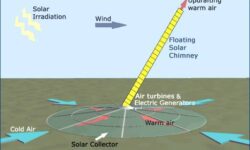Evolution of Solar Cells

With the non-renewable sources of nature diminishing and the global warming effect increasing, Solar energy is vital in the present times because the power demand in the world is a never-ending process. And the emergence of solar cells in the 19th century has signified the importance of solar energy today, in our lives. A solar cell is a device converting sunlight energy directly into electricity using the photovoltaic effect. The term “photovoltaic” is used since 1849, derived from Greek ‘phos’ meaning “light” and ‘voltaic’ meaning “electric” from the name of the Italian physicist Volta. Today, these solar cells or the photovoltaic cells are used to make solar panels, solar modules, or photovoltaic arrays.










